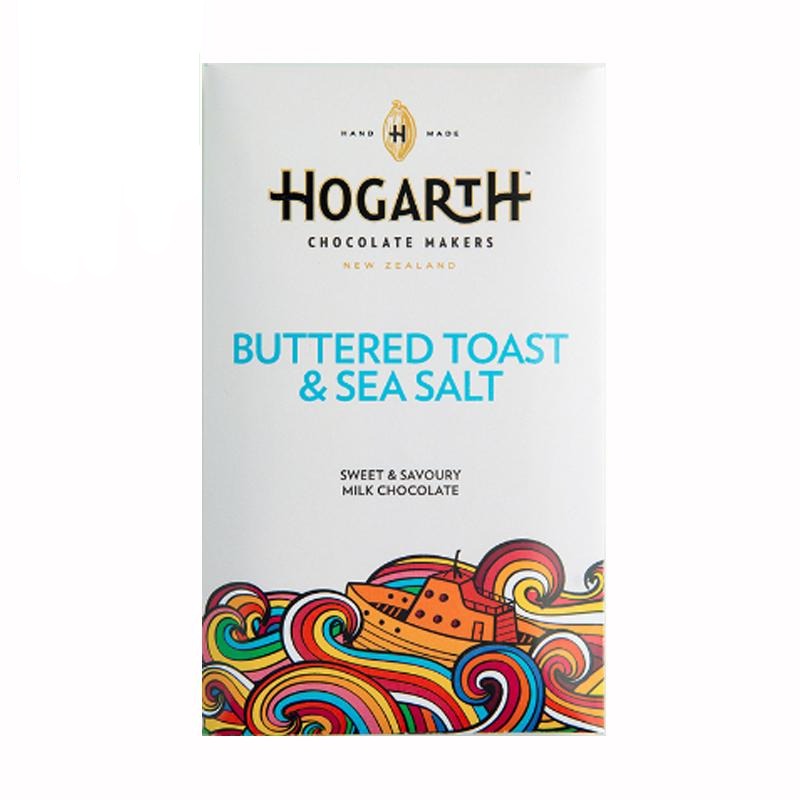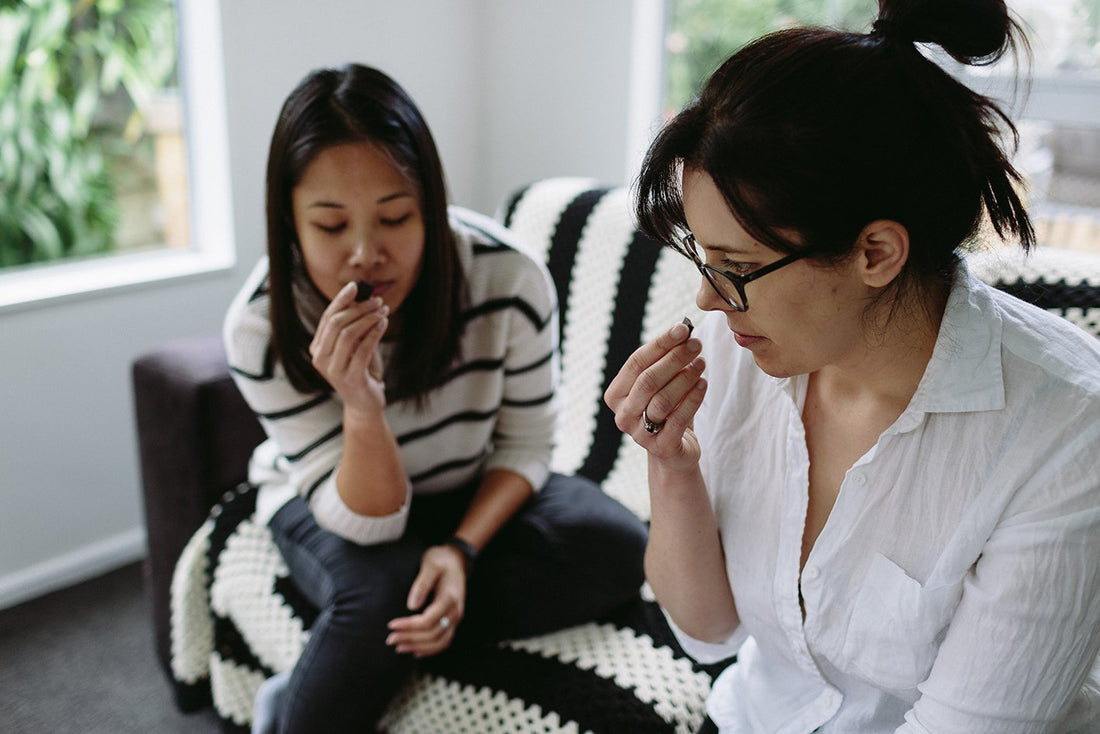It’s a very exciting time in the world of chocolate and the craft chocolate movement has opened people’s eyes to the vast possibilities held within the simple cacao bean. What most of us grew up eating was not real chocolate - it was confectionery. And chocolate doesn’t actually just taste like chocolate, it can taste like different fruits, nuts, flowers, grains, spices, herbs and more - all of these flavours just coming from the cacao. What a revelation!
Tasting chocolate is just like tasting fine wine, craft beer or artisan cheese. There are many different factors that affect the flavour of the beans, including the terroir (topography, soil conditions, climate, etc), the varietal of cacao, the fermentation methods, and the process of the chocolate maker (roasting, grinding, conching, etc). Listen to the story each bar has to tell and - most importantly - have fun.

How to taste...
This might sound strange but there are different techniques for tasting chocolate. If you chew and swallow quickly then you probably won’t get the full experience. Good quality chocolate has several layers and stages of flavour, so you need to take your time and consider each mouthful an adventure, complete with a beginning, middle and end (we call this the ‘flavour journey’).
A clean palate is essential if you want to do justice to the chocolate - if you can still taste the last thing you ate, try eating a slice of apple or cucumber and have a sip of sparkling water. Also, make sure the chocolate is at room temperature - cold chocolate will not release its flavours properly.
When we taste new chocolate we are judging it on four main criteria: appearance, aroma, taste and texture. Here are a few pointers of what to look for in each area...

Appearance
Start by examining the physical nature of the bar - does it have a perfectly smooth surface with consistent colour and texture? Does it have a nice shine? Does it make a nice clean ‘snap’ sound when you break it, rather than a dull thud? All of these things are signs of a good ‘temper’, and the marks of a master craftsman.
Aroma
Be sure to have a good whiff of your chocolate before you taste it. What does it smell like? Do you notice any individual scents or is there a complex mixture? Does the smell evoke any memories? Examining like this helps to prepare your mouth for the tasting.
Your tastebuds tell you whether things are salty, sweet, sour, bitter or savoury (umami). The rest of what we call flavour (fruity, floral, nutty, etc) is actually the aroma. Our brain combines taste and aroma to create the overall flavour experience.
Texture
As we all know, texture is a vital part of our chocolate pleasure. Is the bar smooth and creamy or is their a roughness? Is it mouthwatering or does it leave your mouth dry? Does it melt slowly or quickly? In the highest quality chocolate, we look for a really smooth texture with a slow melt, which allows the flavours to develop over time. Cheap chocolate usually melts very quickly, and offers a basic monotone flavour.
Taste
Now it’s time for the main event - how does the chocolate taste? Chew it a few times to get the juices flowing, then move the chocolate slowly around your mouth and let it melt over time. What do you taste at the beginning? Does it change over time? Is there a pleasant aftertaste?

You can use this flavour map to help you find flavours as you’re tasting, as well as searching your flavour memories. When you’re new to this sort of chocolate tasting, it can be tricky to pick out individual flavour notes, and you might feel like everything just tastes like chocolate. It’s a good idea to start with two single origin 70% bars that only contain cacao and sugar, but offer really different flavour notes. You might like to try comparing the Foundry Chocolate India 70% with their Vanuatu 70% - you won’t believe these bars are made with exactly the same ingredients! The difference in flavour is almost entirely due to the origin of the cacao.
Over time you’ll build up experiences of trying different chocolates and finding different flavour notes. The more you have to compare, the easier it becomes to discover and understand new flavours, along with developing the vocabulary to describe things. It won’t happen overnight but it’s a fun journey to embark on.
If you’d like to learn more about tasting chocolate, you might like to check out our Chocolate Tasting Course.



